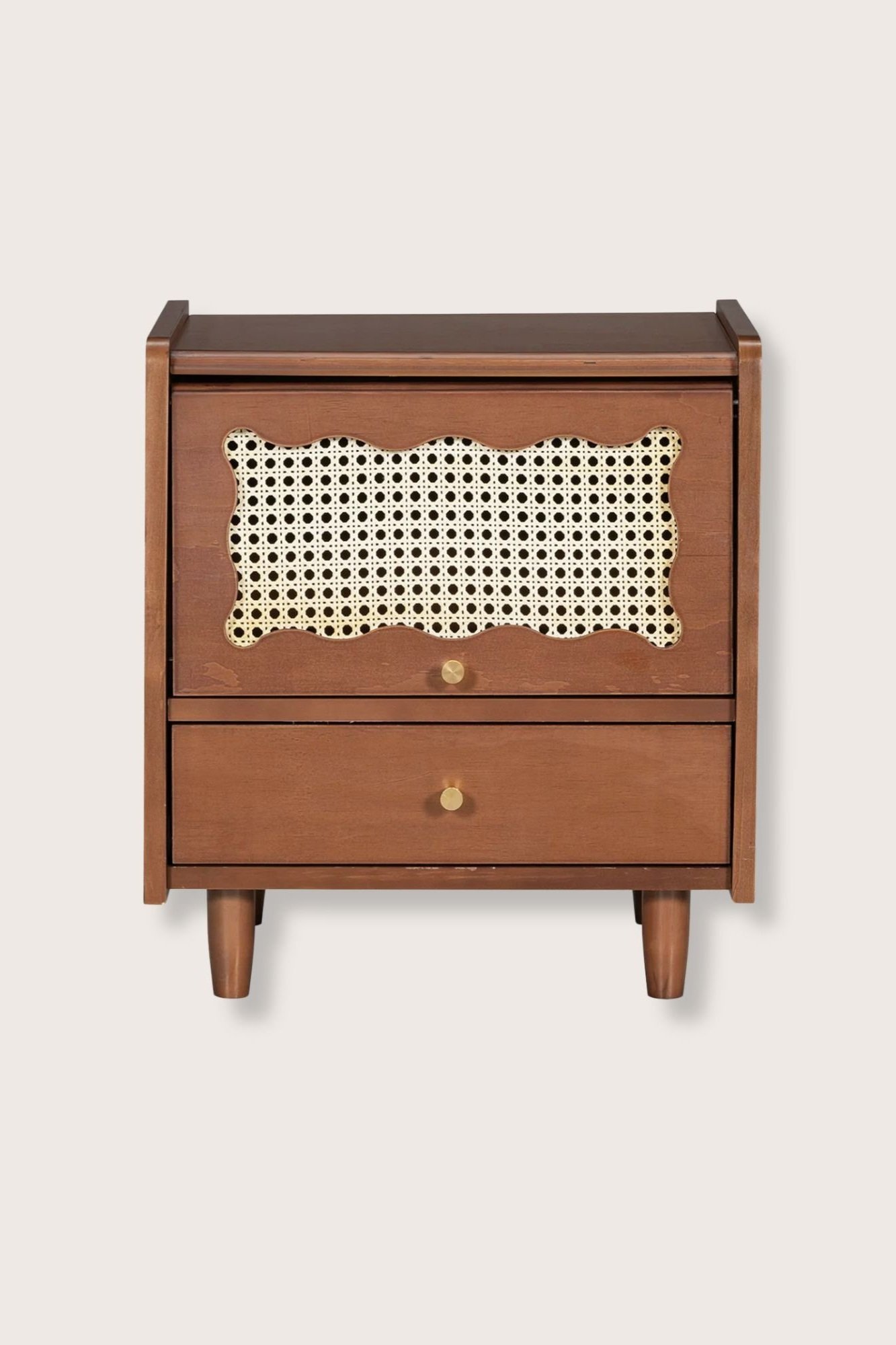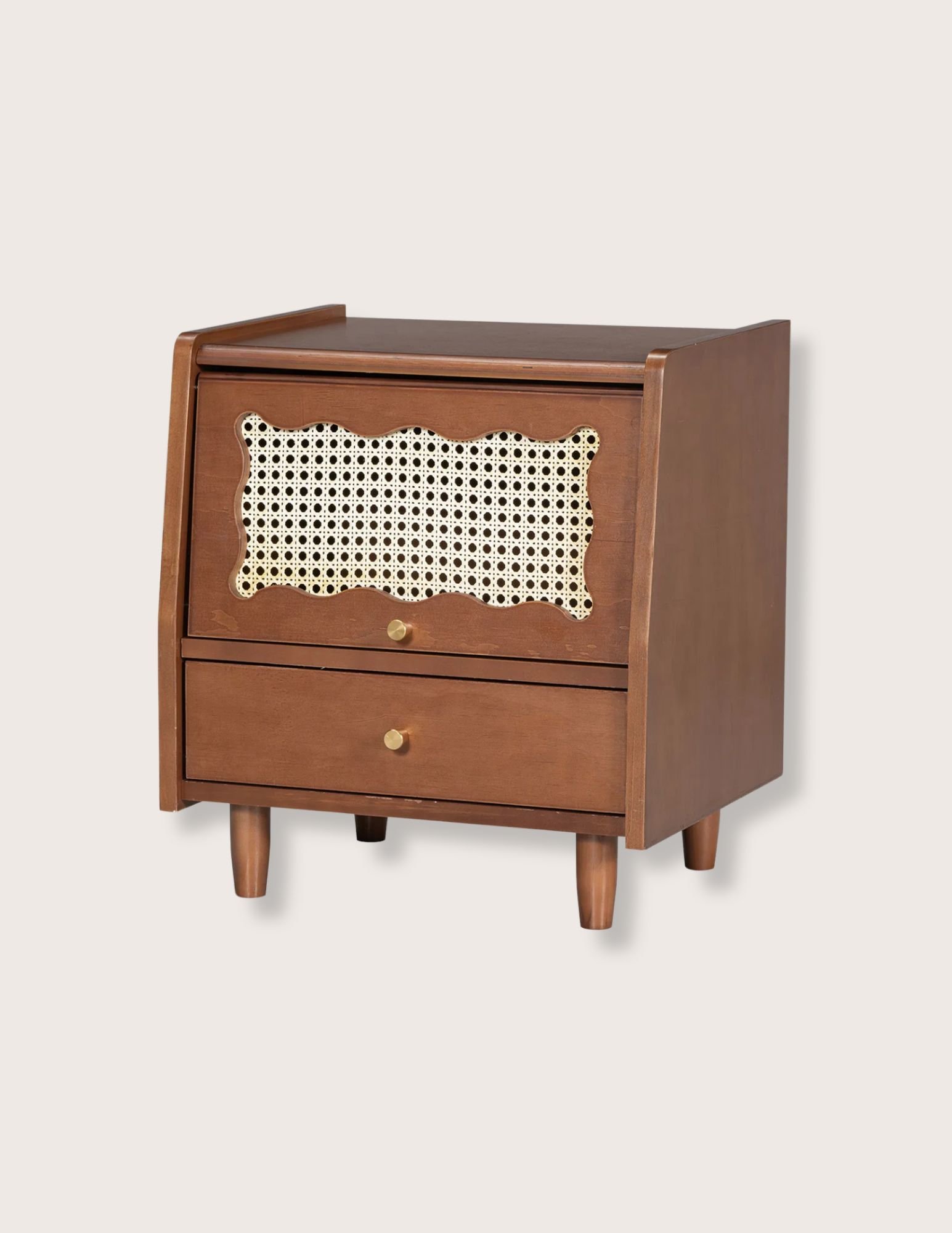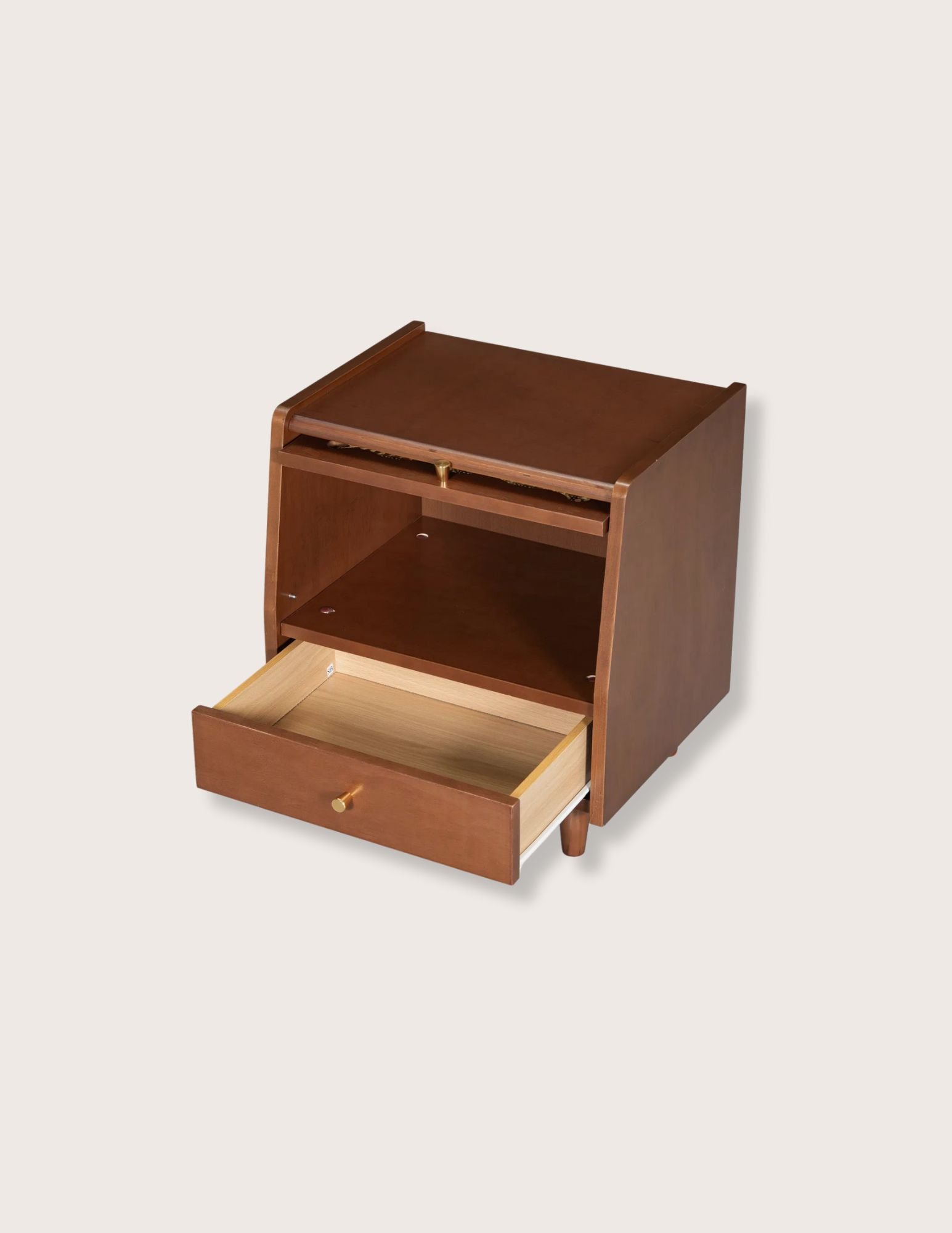 Image 1 of 4
Image 1 of 4

 Image 2 of 4
Image 2 of 4

 Image 3 of 4
Image 3 of 4

 Image 4 of 4
Image 4 of 4





Chase Ivory Dresser
Details
Showcase a modern, minimalist style for your bedroom with our Chase Ivory Dresser. This sleek white dresser features handle-less slide drawers, crisp vertical and horizontal lines, and graceful curved lines for a beautiful, streamlined aesthetic. 8 drawers provide ample storage space for both personal essentials and household items. The water-resistant surface can be easily cleaned of dust, making it ideal for use in the bedroom, living room or entryway. This thick and strong storage piece is composed of dense material, which is stable and durable. The drawers are connected by metal slides to form a stable structure that perfectly meets the storage needs of large and heavy items. There is also an anti-tipover device on the back panel to prevent tipping, helping to ensure safe usage of the piece in your home. Perfectly designed to meet the requirements of your daily life in variety of ways, and with impeccable style, the Chase Ivory Dresser is the ideal combination of stylish form and flawless function that your home has been waiting for.
Editors' Note
Our Chase Collection is named for the groundbreaking, modernist architect, John Saunders Chase and his wife, Drucie. Like so many Black architects of the early 20th century, John Chase's history reads as a litany of firsts. Chase was born in Annapolis, Maryland in 1925 to hardworking parents. His mother, Viola Hall Chase, was a teacher and cook, and his father, John S. Chase, Sr., a school principal who also worked as postal carrier. Following his parent's separation, Chase was raised primarily by his mother. He was introduced to architecture by Mr. Marchand, a teacher at Bates High School. By 1948 he had a bachelor's degree from Hampton University. In 1950, after a brief stint as a draftsman in Philadelphia, Chase enrolled in the University of Texas at Austin School of Architecture, only two days after the Supreme Court decision, Sweatt v. Painter, forced the school to open its graduate programs to Black students. In 1952 he became the school's first African American graduate. His master’s thesis, Progressive Architecture for the Negro Baptist Church, presaged an early career that focused on the design of churches in Black communities. But before that career could begin, he would have to fight his way past the barriers erected to keep him out, beginning with an appeal to the state of Texas to allow him to sit for his licensing exam. The appeal was needed because of racist hiring practices in the state. John could not accumulate the hours of apprenticeship the law required for taking the test because no one in the state would hire him. The appeal was granted, Chase passed the test, and became the first licensed Black architect in the state of Texas. While teaching at Texas Southern University, he would establish his own practice, which he built with the help of his wife, Drucie, whom he had met while standing in for a groomsman at a wedding. Arriving in Houston in 1952 with sons John, Jr. and Anthony, the couple would turn church Sundays into networking opportunities, making relationships in their new community. These meetings would form the backbone of the Chase's thriving business through projects such as The George R. Brown Convention Center, the Thurgood Marshall School of Law, and the Martin Luther King, Jr. School of Humanities at Texas Southern University. Later, Chase would receive commissions for the renovation of the Harris County Astrodome and the design of the U.S. Embassy in Tunisia. An unquestioned master of modernist design, Chase's home became one of his best known and most enduring projects. Originally completed in 1959, the home was one of the earliest mid-century style homes in the state. Even in its first incarnation the house showcased Chase's devotion to new ideas. The first floor was entirely composed around a central, outdoor courtyard. Variations of this seemingly radical idea were already beginning to circulate in California's Bay Area, in homes created by developer Joseph Eichler, working with architects, Bob Anshen and Steve Allen. However, Chase's innovation — making the courtyard the literal center of the home — arguably has older precedents in the Swahili architecture of towns such as Lamu and Stone Town. By the mid-60s, Eichler was producing homes with Chase-style courtyards. And by the late 60s, the Chase family — including the couple's third child, Saundria — were ready for a remodel. The original, single-story home was converted to two floors, and the courtyard became a two-story atrium with a dazzling terrazzo floor. The ground floor also featured massive plants, fountains, a fish-filled pond complete with water lilies, and spotlights. In many ways the design was a break with the minimalist orthodoxy of the Modernist aesthetic, but Chase's designs were less an attempt to embody a style, and more a personal expression of optimism at the possibility of a better world. His home became a hub for progressive Black Texans who shared that dream, and became known as a place where collaborations were born — from the artistic to the corporate. Over the years the house convened discussions and gatherings of people from opposite political parties, disparate industries and various points of view, listing Muhammad Ali and Harry Belafonte among a long list of distinguished guests. Simultaneously, his business continued to grow into the 90s, eventually opening offices in Dallas, Austin, and Washington, D.C., alongside his Houston Headquarters. A member of the AIA College of Fellows, John Chase was one of 12 architects responsible for founding the National Organization of Minority Architects (NOMA). John Chase passed away in 2012. Drucie Chase, who continued their work of public service and community involvement, followed in 2021.
Details
Showcase a modern, minimalist style for your bedroom with our Chase Ivory Dresser. This sleek white dresser features handle-less slide drawers, crisp vertical and horizontal lines, and graceful curved lines for a beautiful, streamlined aesthetic. 8 drawers provide ample storage space for both personal essentials and household items. The water-resistant surface can be easily cleaned of dust, making it ideal for use in the bedroom, living room or entryway. This thick and strong storage piece is composed of dense material, which is stable and durable. The drawers are connected by metal slides to form a stable structure that perfectly meets the storage needs of large and heavy items. There is also an anti-tipover device on the back panel to prevent tipping, helping to ensure safe usage of the piece in your home. Perfectly designed to meet the requirements of your daily life in variety of ways, and with impeccable style, the Chase Ivory Dresser is the ideal combination of stylish form and flawless function that your home has been waiting for.
Editors' Note
Our Chase Collection is named for the groundbreaking, modernist architect, John Saunders Chase and his wife, Drucie. Like so many Black architects of the early 20th century, John Chase's history reads as a litany of firsts. Chase was born in Annapolis, Maryland in 1925 to hardworking parents. His mother, Viola Hall Chase, was a teacher and cook, and his father, John S. Chase, Sr., a school principal who also worked as postal carrier. Following his parent's separation, Chase was raised primarily by his mother. He was introduced to architecture by Mr. Marchand, a teacher at Bates High School. By 1948 he had a bachelor's degree from Hampton University. In 1950, after a brief stint as a draftsman in Philadelphia, Chase enrolled in the University of Texas at Austin School of Architecture, only two days after the Supreme Court decision, Sweatt v. Painter, forced the school to open its graduate programs to Black students. In 1952 he became the school's first African American graduate. His master’s thesis, Progressive Architecture for the Negro Baptist Church, presaged an early career that focused on the design of churches in Black communities. But before that career could begin, he would have to fight his way past the barriers erected to keep him out, beginning with an appeal to the state of Texas to allow him to sit for his licensing exam. The appeal was needed because of racist hiring practices in the state. John could not accumulate the hours of apprenticeship the law required for taking the test because no one in the state would hire him. The appeal was granted, Chase passed the test, and became the first licensed Black architect in the state of Texas. While teaching at Texas Southern University, he would establish his own practice, which he built with the help of his wife, Drucie, whom he had met while standing in for a groomsman at a wedding. Arriving in Houston in 1952 with sons John, Jr. and Anthony, the couple would turn church Sundays into networking opportunities, making relationships in their new community. These meetings would form the backbone of the Chase's thriving business through projects such as The George R. Brown Convention Center, the Thurgood Marshall School of Law, and the Martin Luther King, Jr. School of Humanities at Texas Southern University. Later, Chase would receive commissions for the renovation of the Harris County Astrodome and the design of the U.S. Embassy in Tunisia. An unquestioned master of modernist design, Chase's home became one of his best known and most enduring projects. Originally completed in 1959, the home was one of the earliest mid-century style homes in the state. Even in its first incarnation the house showcased Chase's devotion to new ideas. The first floor was entirely composed around a central, outdoor courtyard. Variations of this seemingly radical idea were already beginning to circulate in California's Bay Area, in homes created by developer Joseph Eichler, working with architects, Bob Anshen and Steve Allen. However, Chase's innovation — making the courtyard the literal center of the home — arguably has older precedents in the Swahili architecture of towns such as Lamu and Stone Town. By the mid-60s, Eichler was producing homes with Chase-style courtyards. And by the late 60s, the Chase family — including the couple's third child, Saundria — were ready for a remodel. The original, single-story home was converted to two floors, and the courtyard became a two-story atrium with a dazzling terrazzo floor. The ground floor also featured massive plants, fountains, a fish-filled pond complete with water lilies, and spotlights. In many ways the design was a break with the minimalist orthodoxy of the Modernist aesthetic, but Chase's designs were less an attempt to embody a style, and more a personal expression of optimism at the possibility of a better world. His home became a hub for progressive Black Texans who shared that dream, and became known as a place where collaborations were born — from the artistic to the corporate. Over the years the house convened discussions and gatherings of people from opposite political parties, disparate industries and various points of view, listing Muhammad Ali and Harry Belafonte among a long list of distinguished guests. Simultaneously, his business continued to grow into the 90s, eventually opening offices in Dallas, Austin, and Washington, D.C., alongside his Houston Headquarters. A member of the AIA College of Fellows, John Chase was one of 12 architects responsible for founding the National Organization of Minority Architects (NOMA). John Chase passed away in 2012. Drucie Chase, who continued their work of public service and community involvement, followed in 2021.

Additional Details
Dining Table
Color: Ivory
Material: MDF
Dimensions: 31.5” x 15.75” x 29.72”
Weight: 106.04 lbs
Imported
Made to order
Ships to the continental US in 3-4 weeks


























